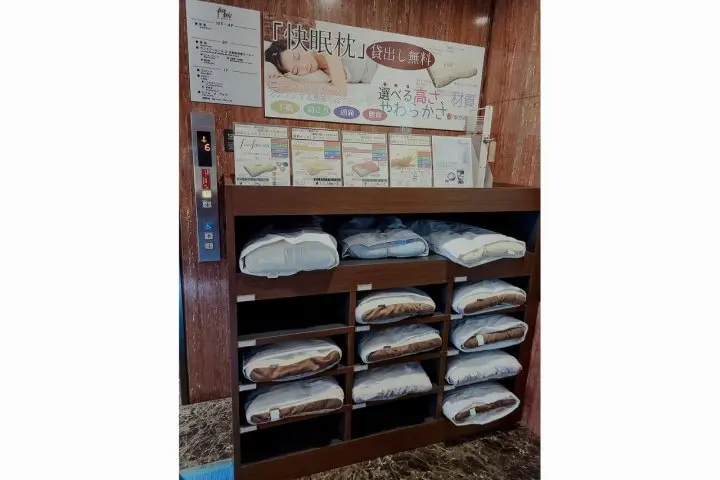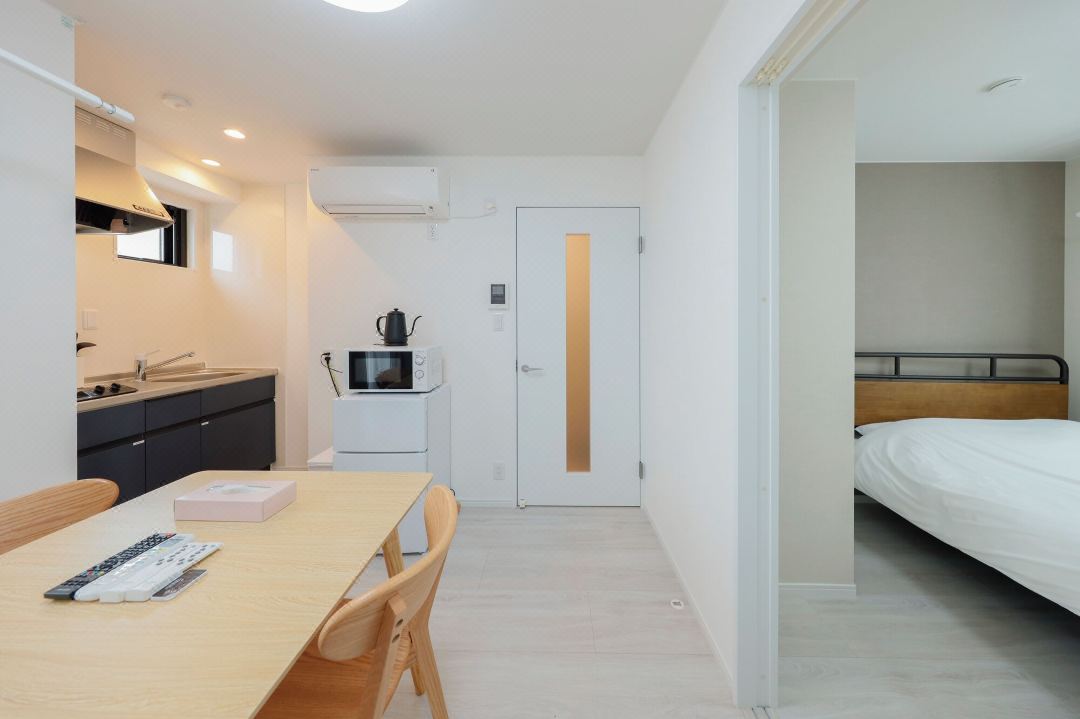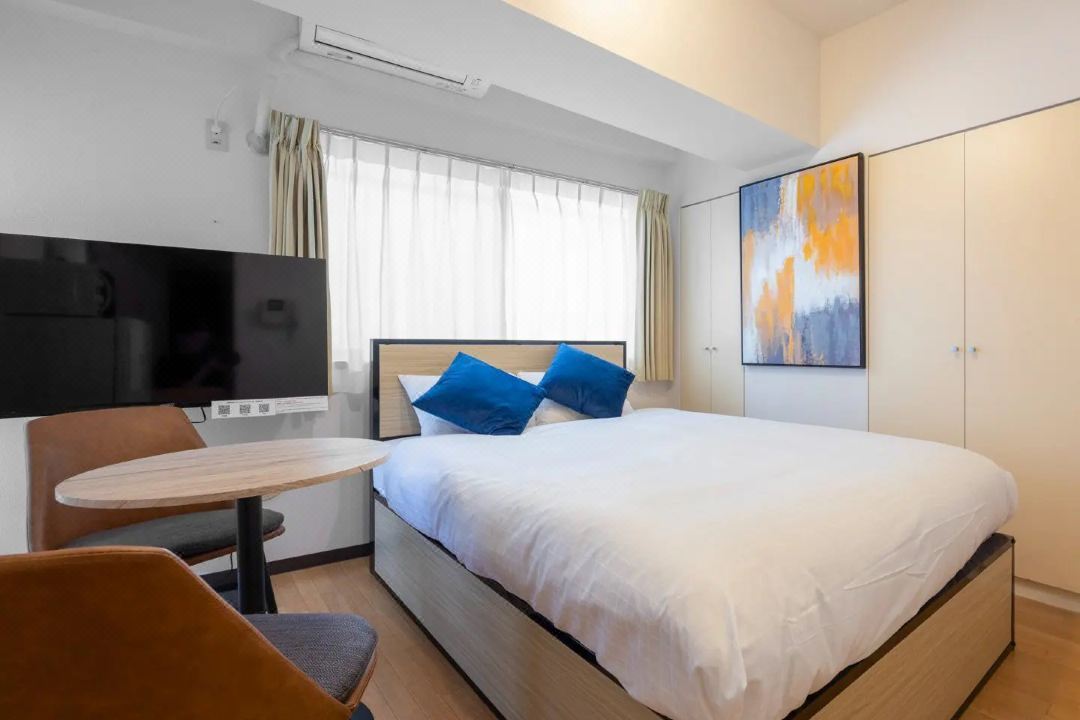A History Lesson in the Heart of Shinjuku: Kadoya Hotel

Kadoya Hotel is a comfortable hotel located right by Shinjuku Station West Exit. This hotel has been around here since the early 1970s and a visit here is a chance to learn more about the fascinating history of Tokyo's Shinjuku district.
Hello, and welcome back to my series about ryokan and hotels in Tokyo! My name is Roza Akino, and I live and work in Japan. I love staying at traditional inns, ryokan, whenever I go on a trip. However, today I’ll be introducing you to a hotel situated right in the heart of Shinjuku.

In just a few minutes’ walk from the West Exit of Shinjuku Station, I arrive at the simple-looking entrance of Kadoya Hotel. This 87-room hotel has a simple interior with wooden walls, a marble floor, a chandelier, and lit up check-in counter with a black-and-white photo displayed on the monitor behind it.
I look to my left and see a few vintage chairs and a glass case with some cups and plates on display, making for a very Showa-retro feel. (*1)
*1 Showa refers to the Showa period (1926-1989) in Japanese history.

The hotel lobby



As I’m waiting for Takekawa-san, the current CEO of Kadoya Hotel, a corner with various accessories catches my eye.
Kadoya Hotel has a corner dedicated to Inden—a traditional craft that was originally born in the area that is now Yamanashi Prefecture. Invented centuries ago, Inden is a technique of producing lacquered deer leather, which was traditionally used on decorative parts of samurai leather. The urushi lacquer is pressed onto the leather through a cutout pattern; as the urushi dries, it creates a 3D motif on top of the leather.
A good variety of accessories are presented here, from wallets to coin purses, pass holders and of course the must-have accessory in Japan: business card holders.

Inden accessories for sale
Takekawa-san arrives, and we take a seat at the Café la Voie next door, which is also owned by the hotel. The café, which faces roads on both entrances, has its windows open to promote air circulation and a machine that measures the amount of carbon dioxide in the air as a part of its COVID safety precautions.


This machine measures the CO2 in the air


Roads on both sides of the café

A fancy coffee drip
Kadoya hotel was built in the 1970’s. I’m starting to see a pattern in the hotels that I’ve interviewed up to this point in that they all seem to have started from being a ryokan, and Kadoya Hotel is no different.
Originally, the ryokan was mainly used by day laborers that would come into the area and work for cheap—at the time, this wasn’t an area where people came for a vacation, so work stays were common. The photo displayed behind the counter was taken two years before the hotel opened.
Looking closer, I can’t believe that a mere 50 years ago Shinjuku was practically barren land. “There was nothing in Shinjuku at that time!” Takekawa-san laughs, as he starts to explain the history of this area. It really was just a burnt field.
In the area around the hotel, now dominated by skyscrapers, there used to be nothing but water reservoirs. In fact, criminals who were running from the police would often use the area as a hiding place because it was easy to disappear here.

Shinjuku approximately 50 years ago
Post-war, at a time when Kadoya Hotel was still a ryokan, the popular Shinjuku Golden Gai was also very different. Shops there used to serve “yami nabe”—a nabe (hot pot) with mystery ingredients brought out from Yokosuka—made out of whatever was available at the time so you never knew (or wanted to know) what you were eating. According to a first-person account, sometimes non-food items like boots would be mixed in together among the food ingredients. After the war, there was not enough food to go around so people had to make do with what they could. It makes for an interesting story, but I’m relieved to know that this is not the case anymore.
At the time the hotel was built, Shinjuku was not a major station. No one at the time would have even dreamed that it would become one of the largest and busiest areas in Tokyo. There was no plan originally for Shinjuku to become such a grand station, and in fact, it was quite shoddy—the station gates were wooden and it would often flood in the rain. However, there was a sudden development of department stores around it, and the station didn’t have a chance to catch up. This is why, Takekawa-san says, Shinjuku Station has no building.
Wait, what? Shinjuku Station? No station building? But now that I think of it, he’s right—the buildings connected to Shinjuku station are all department stores, and the gate entrance isn’t even on the ground floor, it’s underground. When Shinjuku Station is shown on TV, it’s always shown from the newly-built south entrance, or the bus terminal building. The reason for this is because the East and West Exits only show department stores, so it’s difficult to find the entrance to the station if you’re unfamiliar with it.
In addition, he continues, there were some changes to the construction of the train lines that also contributed to the development of the Shinjuku area. The Keio Line that now sits at the West Exit of the station was originally meant to be in a different location, but for technical reasons was moved to its current location, utilizing a steep curve in the tracks that would be illegal to build by today’s construction requirements.
The Odakyu Line was also supposed to go somewhere else—Shibuya, in fact—but ended up being moved to Shinjuku as well. All these last-minute changes contributed to the sudden development of the Shinjuku station area. The department stores had already been built on top of the station at the time, so the only choice available was to bring the various lines down underground—and this, ladies and gentlemen, is how Shinjuku Station came to be.
I realize after listening to this history lesson that I still haven’t heard much about the hotel itself. “I noticed your business card holder is Inden, like the accessories you have displayed in the lobby,” I casually mention.
Takekawa-san explains that he is a fan of traditional culture, and that by having something very traditional like Inden available as a souvenir right in the lobby of the hotel, he hopes to give his guests a chance to see the beauty of traditional craftsmanship without having to go anywhere. Things like these will create memories and conversations, he says. Maybe a guest will go back to their home country, and say to their friends, “Hey look at this! I got this in Japan, it’s deerskin decorated with urushi lacquer, isn’t it beautiful?” and then their friends will think, “Oh, I’d like to see that up close too!” As a lover of traditional craftsmanship, I think experiencing and understanding the culture is the best way to see the beauty of another country, so I can’t agree more.
Before COVID-19, 70% of Kadoya Hotel’s guests were Japanese people, so Takekawa-san hopes to increase the number of international guests. One of the things that this hotel takes pride in is its offering of tamago-kake-gohan (raw egg over rice). The egg used for this dish is a very special one, from Tanba, Kyoto, bright orange in color and absolutely delicious. I must admit that tamago-kake-gohan is one of my favorite dishes, so although it’s past serving time (this dish is available for breakfast, until 10:00 AM), I ask if it’s possible to try it. The hotel staff indulges me, and my stomach lets out a growl in anticipation.
While I was expecting just a small bowl of rice with a raw egg, what comes out is the whole tray of Japanese-style breakfast, including a grilled salmon and miso soup, complete with dessert yogurt.



Bright orange egg yolk—yummy!
The tamago-kake-gohan is sublime, and yes, the egg yolk really is that orange. If you’ve never tried it, Japan is definitely the place to do so because the eggs here taste nothing like I’d ever tried before coming here. Of course, if a Japanese breakfast is not your thing, a western-style breakfast is available as well.

With my stomach full, next is a tour of the rooms. Comfortable sleep is very serious business here. When Takekawa-san took charge of the hotel, he changed all the beds to have comfortable Simmons mattresses, because as he says, “You spend most of your time at a hotel sleeping, so we want to offer the best quality sleep.” You can have your pick of three types of pillows.

Different types of pillows with different characteristics
Currently some rooms of the hotel are still under construction, but the hotel is moving towards creating an overall barrier-free environment, especially since many guests are seniors. The barrier-free rooms also have adjustable heights for the closet hanger and shelves to make them easily accessible to people in wheelchairs.

Installation of ramps and handrails
A third of the rooms are even able to connect to your smartphone so that you can watch Netflix or YouTube on the large screen TV.

The closet with adjustable shelf height allows easy access for people in wheelchairs.
The rooms themselves are very interesting as well. Some are regular rooms with ambient light behind the beds, while others have a more Japanese-style feel with bamboo ceilings, reed doors and shoji.

A standard modern twin room

Simple design with a soothing brown color palette

The wood and marble design room with a large-screen TV

Remnants of the ryokan-style architecture

A Japanese-inspired design, with bamboo ceiling

One of my favorite wa-taste rooms with reeds on the sliding doors


My personal favorite are the rooms that have plaster walls—the same type that are traditionally used in old Japanese warehouses, kura. The smell of these rooms is quite unique, and something about it is relaxing to me.

Here, the clean white walls are accented with antique (100+ year old) wood pieces inlaid with a sliced seed.

The square wall decorations
The bathrooms are quite spacious as well, equipped with the latest toilet technology, of course. Occasionally while passing some nook or cranny I notice small decorations scattered here and there.

A very modern and roomie bathroom complete with high-tech toilet

Small touches of Japanese aesthetic in the hallways
There are also two rooms (which are still under construction, so unfortunately no photos) that will act as multi-purpose rooms—these rooms will be called, “Our Secret Place”. They will be adaptable rooms that have a baby bed, family mattress, and can be rearranged to be an area where a family can go and relax, and maybe enjoy some play-time.

One of the rooms that can accommodate up to four people
Perhaps you want to have a good night’s sleep in a room that makes you feel like you’re in a Japanese kura (traditional storehouse). Or perhaps you want to be surrounded by Japanese-style reed doors and a natural brown color scheme. Or maybe you just want to try out the incredible tamago-kake-gohan. Regardless what you’re looking for, Kadoya Hotel has you covered. With its central Shinjuku location, it’s sure to give you a relaxing and enjoyable stay.
Until next time...
Hotels near Kadoya Hotel
I am an actress and model living in Japan. Tokyo Ryokan Stories is my essay series about less-known but amazing ryokan and hotels in Tokyo.







































![[Latest] Complete Guide to atmos Exclusive Sneakers and Special Edition Models | Apparel and Upcoming Releases](https://resources.matcha-jp.com/resize/720x2000/2025/12/12-252706.webp)
![[2025-2026 Edition] Four Ski Resorts in Hyogo Prefecture Yabu City Opening on December 27th!](https://resources.matcha-jp.com/resize/720x2000/2025/11/28-251434.webp)
![[Next event confirmed! / Report] “Let’s Eat Tokyo Food”](https://resources.matcha-jp.com/resize/720x2000/2025/12/26-254125.webp)